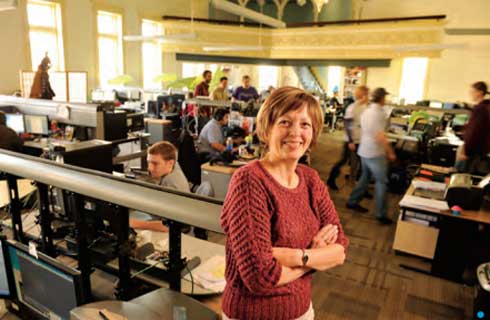国际学生入学条件
Test Scores Required- 600 on the TOEFL paper-and-pencil test, 100 on the TOEFL internet-based test, 7.5 on IELTS. Admission is limited and competitive. Applicants should have completed a major in mathematics at an accredited college or comparable institution with strong mathematics offerings. The department recommends, but does not require, a reading knowledge of one language (French, German, or Russian) at the time of admission. The GRE Subject Test in Mathematics is required for the application.
展开
IDP—雅思考试联合主办方

雅思考试总分
7.5
了解更多
- 雅思总分:7.5
- 托福网考总分:100
- 托福笔试总分:600
- 其他语言考试:NA
课程简介
The objects of study of algebraic geometry are, roughly, the common zeroes of polynomials in one or several variables (algebraic varieties). But because polynomials are so ubiquitous in mathematics, algebraic geometry has always stood at the crossroads of many different fields. Classical questions in algebraic geometry involve the study of particular sets of equations or the geometry of lines and linear spaces. Among the kinds of questions that one can ask are enumerative ones: How many conics in the plane are tangent to a given set of five lines How many lines are contained in a general surface of degree three in space Another motivating question has been to try to fit together all algebraic varieties of a given type into a space which is itself an algebraic variety, such spaces are called moduli spaces. Simple examples of this type are projective spaces, which parameterize lines through the origin in a vector space, and their generalizations, Grassmannians, which parameterize linear subspaces of a vector space. In turn, the geometry of a Grassmannian can often be applied to solve an enumerative problem. In other kinds of moduli problems, one attempts to classify all curves, surfaces, or higher dimensional varieties of a certain type, another example is the space of all vector bundles of a given type over a fixed algebraic variety. Then one tries to construct and describe the moduli space of all such objects. Often invariant theory, i.e. the study of all invariant polynomials under the action of a group on a vector space, or a more general algebraic variety, plays a crucial role in the construction. In the attempt to answer these kinds of questions, algebraic geometry has moved from its classical beginnings to become a deep subject, drawing on a vast array of ideas in mathematics including commutative and homological algebra and category theory. The seminal figures in the development of modern algebraic geometry include Oscar Zariski, Andre Weil, Jean-Pierre Serre, and Alexandre Grothendieck.
展开



















































